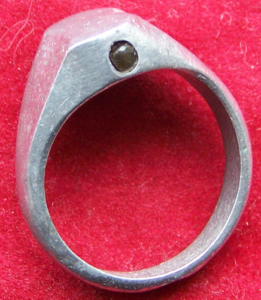Pelgrane Press: $50 (print plus PDF, the PDF only version will be released in a couple of months).
Hideous Creatures feels like kind of an under the radar release, perhaps because it’s about 50% made up of previously published Ken Hite monographs. At a quick glance, the main text is exactly the same as you got if you bought the monographs, although the book does add a fun handout for each creature. So there’s some retread factor there.
I got it because, you know, Pelgrane and my wallet. And there are sixteen new creature write-ups! How could I resist?
I am super-glad I did not, because having all of this in one place is amazing. This is one of the best sourcebooks released for Cthulhu mythos gaming ever, and I mean for any system. The stat blocks are for Trail of Cthulhu but they’re the least of what Hideous Creatures offers.
What you get for each creature:
- A few paragraphs of blurb
- Game stats
- A list of abilities you might want to give your version of the creature, so nobody knows what to expect (mostly not tied to any one system)
- Variations: half a dozen to a dozen origins and attributes of the creatures, many of which contradict each other
- A list of ways in which the creature has been represented in world mythologies
- A list of clues the creatures might leave, one for each Trail of Cthulhu ability, but fully useful for any system
- A few scenario ideas
- A bibliography
- A handout

So you’ve got seven or eight pages of solid material for each and every creature, and because Hite and his collaborators focused on variations, it’s immensely flexible. Here’s a bit of the chapter on ghouls, for example.
In the interests of respecting copyright, I cropped that excerpt — get the book if you want suggestions for making ghouls look like jackals, coyotes, flies, or worms.
Are we done? Nah. There’s a chapter at the end about creating or customizing creatures. It’s short but good: Hite covers both how to make creatures horrific (did you know that Lovecraft used catachresis and cubism to evoke horror of the unfamiliar?) and how to generate Trail of Cthulhu stats.
Finally, at the very end, there’s an index. Headers for the index include: “Creatures of Fathomless Space,” “Creatures Who Serve Wizards,” “Creatures of Transformation & Corruption,” “Hideous Creatures By Country, Culture or Region,” and many more. So that’s about a perfect index.
This book is relentlessly useful and evocative, both at once. Seriously worth buying.
